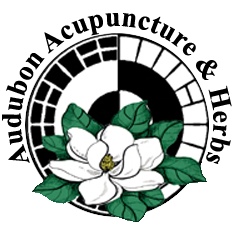Yin and Yang in Traditional Chinese Medicine
The Yin-Yang symbol is a result of the Chinese Philosophy in regards to how the universe functions. The black and white shapes within the circle represent the interaction of two energies called “Yin” and “Yang”; they are not completely black or white nor can they exist without each other. The curve of the symbol reminds us of the constant change of balance between yin and yang, which represent all the opposite principles one finds in the universe.
The Huang Emperor said, ”The principle of Yin and Yang is the foundation of the entire universe. It underlies everything in creation.” Yin, the darker element, is passive, dark, feminine, moist, death, small, and corresponds to the night; yang, the brighter element, is active, light, masculine, dry, birth, large and corresponds to the day.
The cyclical nature of Yin and Yang mean several things to a student of Chinese medicine and philosophy: All phenomena change into their opposites in an eternal cycle of reversal. Since one principle produces the other, all phenomena have within them the seeds of their opposite state. For example, sickness has the seeds of health and health contains the seeds of sickness. Even though an opposite may not appear to be present, nothing is completely devoid of its opposite state.
Traditional Chinese Medicine applies the philosophies of Yin Yang to treat disease. When the body is in balance between Yin and Yang, health is predominant; when Yin and Yang are imbalanced, disease occurs. According to Chinese medicine texts, diseases caused by yang pathogens usually present themselves with heat symptoms while diseases caused by yin pathogens usually present themselves with cold symptoms.
Efforts to diagnose Yin or Yang pathogens result in intake forms with questions such as, “Do you prefer hot or cold drinks?” or “What is your optimal time of day?” Once a Chinese medicine doctor has determined the nature of an imbalance, he or she aims to restore balance through a variety of approaches such as acupuncture, herbs, and recommended changes in diet or lifestyle. As balance is restored in the body, so is health.

Recent Comments